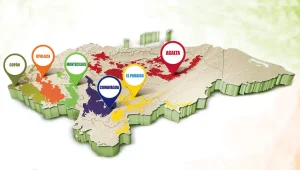Municipality of Dulce Nombre de Culmí
Dulce Nombre de Culmí is a municipality in the Olancho Department of Honduras.
The town of Dulce Nombre de Culmí was founded on January 25, 1856 by the Spanish missionary President Manuel de Jesús Subirana. He relocated it from a place called «Pueblo Viejo» (formerly Culmí), located about four kilometers away to the east of its current location. It was originally an aldea (hamlet) of Catacamas.
It was designated as a municipality on June 30, 1898. Friars who were traveling from Guatemala to the North Coast presented the residents of Culmí with the image of the Holy Child, El Dulce Nombre.
Dulce Nombre is one of the towns where the Pech tribe is present, and its members use their own language in addition to Spanish. A municipality with a population rooted in the Pech culture undoubtedly has the potential for better development and is one of the towns in Olancho and Honduras with great potential.
Exploring its territory means establishing contact with one of the most important lungs of human biodiversity, the Río Plátano Biosphere Reserve, whose Honduran richness has its foundations in the cold and leafy mountains of Dulce Nombre de Culmí.
Location
The municipality is bordered to the north by the municipality of Iriona, to the south by the municipality of Catacamas, to the east by the municipalities of Brus Laguna and Puerto Lempira, and to the west by the municipalities of San Esteban and Catacamas. The city of Catacamas is the closest to this municipality.
Villages
Dulce Nombre de Culmí, Agua Blanca, Agua Buena, Aguaquire, El Cerro, El Zapote, La Campana, La Colonia, La Esperanza or Plan de Los Blancos, La Llorona, El Papayo, El Corozo, Vía Linda, Plan Grande, La Pimienta, Las Arenas, Camalotales, Mata de Maíz, El Sinaí, Manchones, Paulaya, La Unión or El Guano, El Culuco, Las Casitas, Las Flores, Las Marías, Las Minas, Río Largo, Río Negro, La Providencia, Yorito, Los Ángeles, Nueva Esperanza, Pueblo Viejo, Río Negro, San José de La Montaña, San Pedro de Pisijire, Subirana, Suyapita, Tropical Plywood, and Vallecito.
Economic Activities
It is one of the largest towns in the department of Olancho. It is located in a mountainous area of the department, and its main activities are coffee cultivation and livestock farming.
Other Information
The city has a high school, schools, and basic education centers. There is also a Catholic church named Dulce Nombre de Jesús.
The municipality is a very welcoming place with tourism due to its abundant natural resources such as mountains, hot springs, powerful rivers, and a large number of animal species.
Adjacent to the town is the Río Plátano Biosphere Reserve, one of the forest reserves in the Olancho Department.



